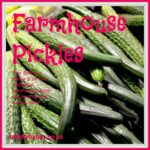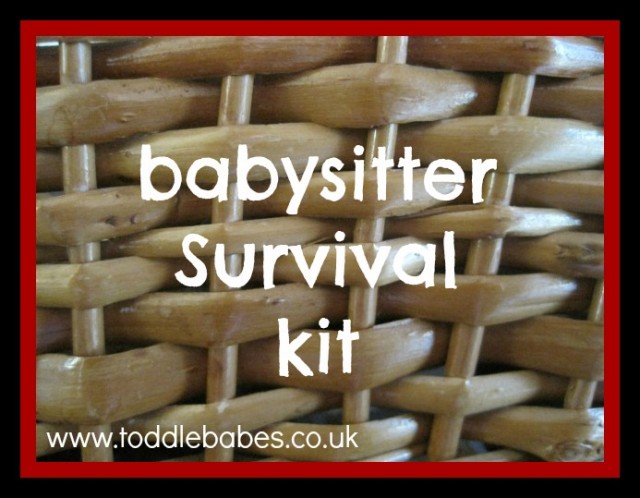
Top Tips for a Cleaner Bathroom

Farmhouse Cucumber Pickles


I enjoy cooking. Ok, let’s qualify that. I like to cook for guests and entertaining. I’m am bored senseless by cooking for the kids everyday. My children don’t have adventurous palates, so I end up making the same few dishes over and over. It all gets a bit tedious.
But what frustrates me, is when I am looking at a new recipe and it is filled with cooking terms. To be fair, most of them are familiar (thanks to Home economics class) but there are also a fair few that confuse me, or I’m just not sure of.
I thought there must be other mums out there who are equally confused by these cooking terms so set about making a simple guide of the most commonly used terms I found in my cook books. I have listed them below in alphabetical order for you.
Cooking Terms
AL DENTE – Italian phrase meaning ‘to the tooth’ Refers to pasta and sometimes vegetables. Means slightly underdone, so still with some ‘bite’
BAIN-MARIE – Also called a ‘water bath’. Usually a baking dish half-filled with water so delicate food is protected from direct heat. Often used for custards.
BAKE BLIND – To bake an empty pastry case before the filling is added. Ensures the pastry is cooked through and not soggy. Usually lined with baking paper and baking beads or rice or beans so it keeps it’s shape.
BASTE – To spoon or brush cooking juices or other fat over food during cooking.
BOUQUET GARNI – A small bunch of herbs used to flavour stocks, soups or stews. Remove before serving.
EN CROUTE – Cooked entirely encased in pastry. Usually refers to meat.
ESCALOPE – Very thin slice of meat, such as veal or chicken.
FLAMBÉ – To pour liqueur over food, usually in the pan over heat, and set it alight.
FOLD – To mix one ingredient into another very gently (usually flour of egg whites) with a metal spoon or plastic spatula. The idea is to combine the mixture without losing the air. To fold properly, cut through the centre of the mixture, then run the edge of the spoon or spatula around the outer edge of the bowl, turning the bowl as you go.
GLAZE – A substance (often warmed jam or beaten egg) brushed over food to give it shine and colour.
INFUSE – To flavour a liquid by heating it with aromatic ingredients (often spices) and leaving to let the flavour develop.
JULIENNE – To cut into uniform thin matchsticks for quick cooking. Often used for stir-fries or in French cuisine.
KNEAD – To stretch and fold dough to make it firm and smooth. This stretches the gluten in the flour and gives elasticity. Used for bread making, but not for pastry making (over handling will make pastry tough).
PARBOIL – To partially cook in boiling water before some other form of cooking. Most commonly used for roast potatoes which are parboiled before adding to the roasting meat.
PINCH – A small amount of something – as much as can be held between your thumb and forefinger.
POACH – To cook food immersed in a gently simmering liquid.
PUNCH DOWN THE DOUGH – A term used in bread making. A yeast dough which is left to rise is them punched with one firm blow of the fist, to remove the air from it.
PUREE – Food blended or processed to a pulp.
REDUCE – To boil or simmer liquid in an uncovered pan so that the liquid evaporates and the mixture becomes thicker and more concentrated in flavour. Most soups and stews are reduced – this should usually be done at a simmer so the flavour of the dish is not impaired by long, hard boiling.
ROUX – The basic mixture of many sauces – fat (usually melted butter) and flour. Used to thicken. Liquid is added to make a sauce.
RUB IN – To mix together flour and butter with your fingertips, usually for pastry. It will resemble fine breadcrumbs.
SCORE – To ensure even cooking. Make incisions with a knife (usually into fish or meat) that do not cut all the way through.
SKIM – To remove fat or scum that comes to the surface of a liquid.
SOFT PEAKS – A term used when egg whites are whipped. The peak will turn over on itself when the beater is lifted.
STIFF PEAKS – A term used when egg whites are whipped. The peak will hold it’s shape when the beater is lifted.
STIR-FRY – To quickly fry (usually in a wok) over high heat while stirring.
STRAIN – To remove solids from a liquid by pouring through a sieve. The solids are discarded, unless specified.
WHISK – To beat rapidly with a wire whisk, to incorporate air and add volume.
ZEST – The coloured skin of citrus fruits. Avoid the bitter white pith below the skin.
Thanks for stopping by. I do hope you find this list useful and that it inspires you to try the more adventurous recipes languishing at the back of the bookshelf!

I am a preschool and primary school teacher and mum to 3 children. I have been involved in education since 1997 and have trained in a variety of educational specialist areas. It is with this expertise that I write articles to help parents and educators provide quality learning experiences for the children in their care.




